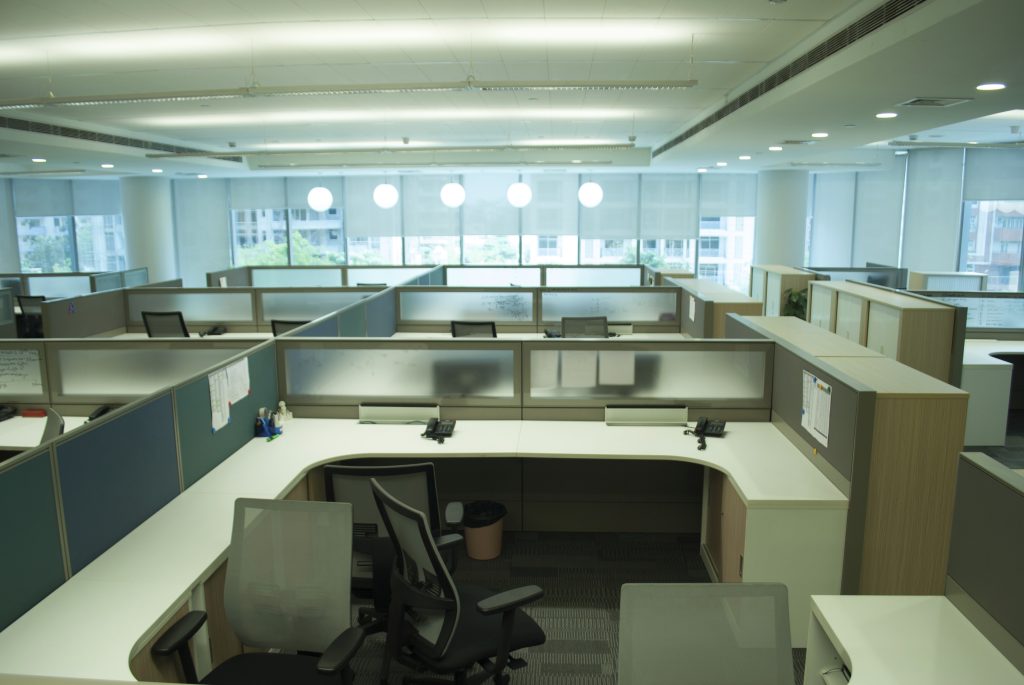To state the obvious, entrepreneurs are busy people. Because of this, startup offices tend to lack the stage-one planning that is employed by larger organizations. An entrepreneur might start with a basic desk and a computer, get a phone system installed, pick up an office lamp and then just sort of grab new equipment as urgency dictates. But while it’s important for an office space to evolve to fit the needs of the startup, putting too little foresight into the planning of a work area can have a devastating impact on the productivity of the entire business—not to mention negatively affect the way a new company is perceived by potential clients. This becomes especially true when entrepreneurs are working out of their own homes, and are forced to adapt their office plan to whatever existing space is available. As such, many startup businesses find themselves stuck in a difficult situation.
Still, difficult or not, having the right office set up may just mean the difference between a successful beginning and one that can turn an entrepreneur’s dreams into a pile of flaming garbage.
So, if you’re an entrepreneur and you’d like some tips on what to avoid when setting up your work space, we’ve identified the three biggest office-design mistakes that startups make.

1. Lack of privacy
How well do you work when you’re surrounded by people? How about when you constantly have someone staring over your shoulder? Chances are, you don’t work very well. And even if you personally don’t have any problem maintaining productivity in high-traffic areas, there’s a good chance that any employees you have might not be quite so serene. In most cases, privacy is key to being able to concentrate. This means that if you are working from home, you need to select an area that is separated from the rest of your house. Turning an extra bedroom into an office is perhaps your best bet, but if you have to use a room for multiple functions, be sure to still distinguish your work space. Divider screens and bookcases can do this easily. Additionally, keep any other distractions out of your work space. The TV does not belong in your office, nor do reminders of your outside responsibilities. If noise is a problem, grab some headphones or create some external white noise, such as with a blowing fan.
For office buildings outside of your home, try to avoid completely ‘open’ office designs when possible. Sure, they promote interaction and collaboration, but they can be absolute murder on individual productivity. Cubicles are one solution to this problem, although they can feel confining and impersonal. Instead, consider setting up an open common area, with secluded secondary areas employees can retreat to when they need to buckle down and get some work done.

2. Poor lighting
People need light for more than just seeing. Proper lighting plays a key part in maintaining a positive mood, and it can even have a significant impact on health. Despite this, many startups settle for office lighting that is less than perfect. As a result, employees become unmotivated, and productivity goes downhill.
By far, the most effective lighting is sunlight. Studies have shown that workers who are regularly exposed to natural light enjoy longer sleep duration, better sleep quality, more physical activity and better overall quality of life than those who are not exposed to natural light in the workplace. Natural light is also free and environmentally friendly. When choosing a location for your office, try to find something with enough windows to provide sufficient natural light. If this isn’t a possibility, be sure to equip your office both with general lighting and task lights. Task lights are also useful even when natural light is available, as they will help you to stay awake while working late at night or on those dreary, cloudy days. For individual office rooms or single-person home offices, set up your general lighting with a dimmer. This will allow you to adjust the lighting to best meet your needs at any particular moment. You may also want to consider getting a daylight-replicating light source if you are stuck down in a basement or completely enclosed room. Most importantly, pay attention to how the lighting makes you feel. Insufficient lighting can lead to depression, while too much light can be equally uncomfortable. Seek to find the right balance for your work space.

3. Poor equipment
Finally, that cheap laptop computer and hardback chair from the kitchen may be a convenient choice in a pinch, but they won’t be doing you any favors in the long run. Before getting any equipment for your office, consider how reliable it will be. If you frequently hold online conferences, a slow computer will give a poor impression to clients. In addition, be sure that the computer desk and office chair you get are built so you can be comfortable throughout the day. Lack of back support, craning of the neck and strained shoulders are not the recipe to success. Also, don’t neglect the importance of paper in the office. At one point or another, you’ll probably need to print out or destroy paper documentation, so a reliable printer and shredder may be an important addition to the rest of your equipment, even if you’re going for ‘paperless.’ Last but not least, invest in the containers and storage (such as filing cabinets) to help you organize your office.
Avoid these three mistakes, and you’ll be on your way to a productive office from which you can turn your dream business into a reality.



